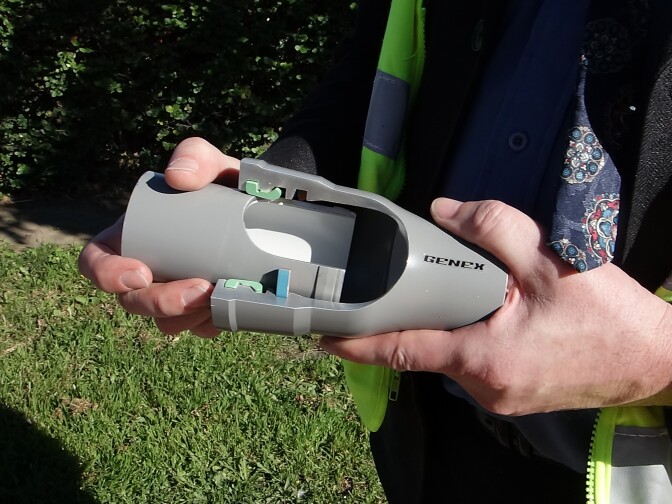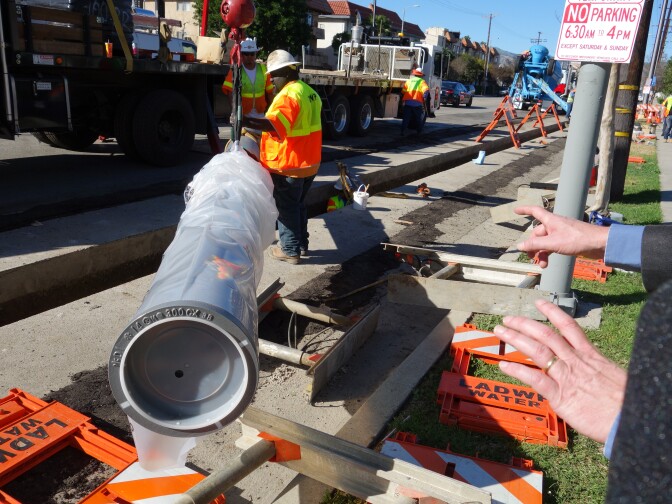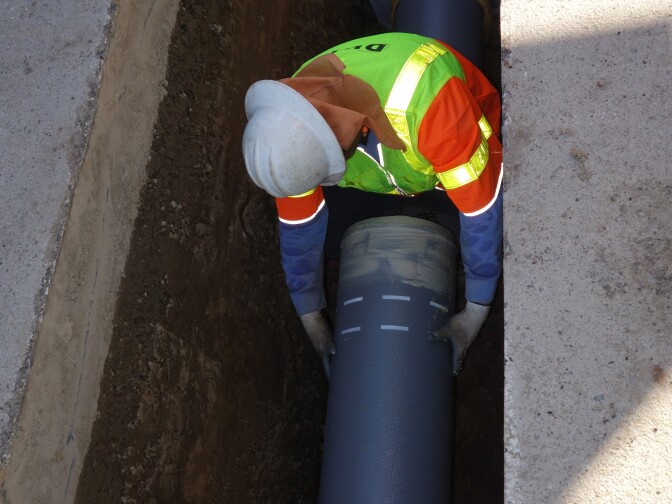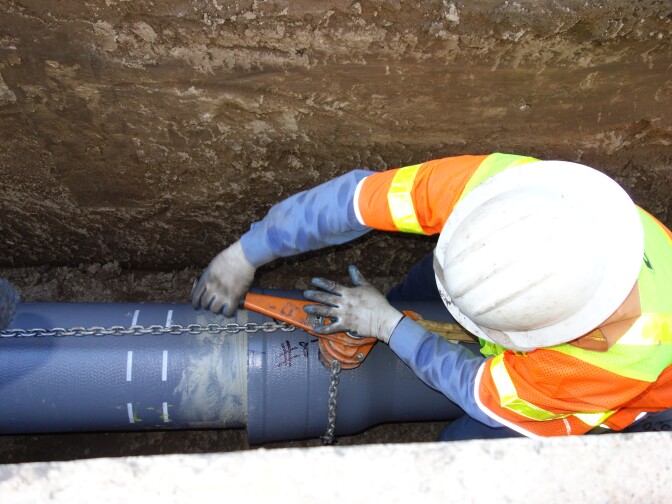With our free press under threat and federal funding for public media gone, your support matters more than ever. Help keep the LAist newsroom strong, become a monthly member or increase your support today.
One man's quest to quake-proof LA's water supply
Craig Davis's long quest to quake-proof the city's water system began at the epicenter of the 1994 Northridge earthquake. He experienced the early morning 6.8 magnitude shaker like most Angelenos did--in bed.
"The ground moved out from underneath me. When I fell, I landed on the floor, and the bed actually came back and hit me," Davis said. He was living in Santa Clarita at the time, and working in the geotechnical engineering division of the Los Angeles Department of Water and Power.
When he arrived at Northridge Medical Center near the epicenter, he saw busted-up streets and broken water pipes as tall as as a human being. That experience set Davis on a quest for a better way to keep the city's water flowing after an earthquake.
In 1996, he found his answer in Japan. For decades, the country had been using pipes with extra long joints, which leave room where the ends meet, to allow the pipes to flex and move if the earth shakes.
Kubota Corporation makes the earthquake resistant pipes used in Japan's largest cities, including Tokyo, Osaka and Yokohama, said senior engineer Naoto Itabashi.
Itabashi said there have been no documented breaks or leaks in their pipes in over forty years.
Davis became convinced that the flexible pipes should be used in Los Angeles. But he still had to persuade his colleagues.
"I explained that to my managers, and they say – 'I think we have that here already.' And I say, 'No, I don't think you do,'" Davis said.
One of the reasons Davis' DWP colleagues didn't immediately adopt the earthquake resistant pipe was because Los Angeles wasn't overly concerned with broken pipes a decade ago.
That's because in the event of an earthquake, the city would use giant open-air reservoirs to store emergency drinking water. Those reservoirs were also used to fill broken water pipes, to help workers find leaks and fix breaks.
But when state and federal water laws changed to discourage open-air water storage, underground pipes became a more important part of the city's water storage strategy, Davis said.
"And that requires us to have more reliable pipes," he said.
In 2012, Davis finally got the green light to test the pipe in five small areas around the city. It took a while to get the first test installed, but this past February, the flexible joint pipes were installed just blocks away from the Northridge hospital, where Davis' adventure began twenty years ago.
Mayor Eric Garcetti's new earthquake plan calls for this kind of pipe in L.A.'s future, but there are obstacles. There's no source of money yet for a replacement project, although a DWP report estimates it will cost the city $12 to $15 billion to install earthquake-resistant pipe and make other important upgrades to the water system.
There's also no local or U.S. manufacturer for the pipe because it's made only in Japan. Davis said the DWP is looking for a local manufacturer that might license Kubota's patent to make the pipe in California.
Davis says it will take decades to replace the most critical pipes, and a century or more to build out a full network. But he's optimistic that Los Angeles will one day be protected from a big earthquake by the pipes he helped to bring here.













